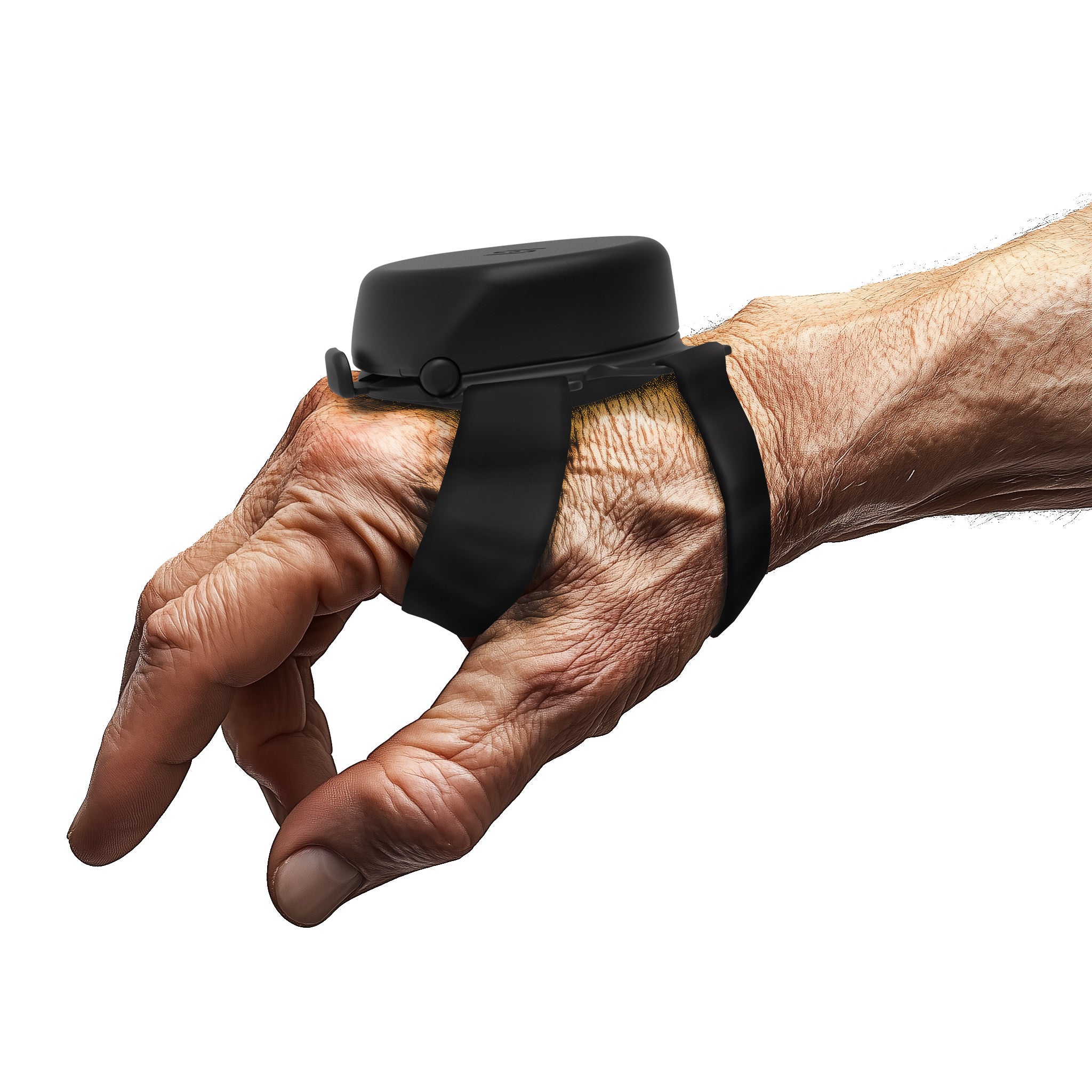While there is no cure for them, doctors and researchers have been constantly looking for tremor treatments that can get rid of the symptoms once and for all. With each year, it seems like we can be more hopeful of finding that cure because new and more efficient tremor treatment options are being found and tested. Today, we take a closer look at focused ultrasound therapy, an incision-free, minimally invasive treatment for essential tremors. Join us to learn more about this treatment option to see if it's for you or not.
What is The Ultrasound Treatment for Essential Tremor?
Let’s take a deep dive into focused ultrasound and study it from several angles to provide you with a better understanding of what it is and what it really does.
Mechanism of Action:
Focused ultrasound works by focusing ultrasonic waves on a narrow region of the brain, typically the thalamus or thalamic nucleus. It is well-known that these regions have a role in the production and transmission of tremor signals. The goal of this therapy is to provide energy with sub-millimeter accuracy. The concentrated beams go through the skull and other tissues without causing any harm before converging at the intended location, where the energy density is high enough to destroy the tissue causing the tremor. Real-time Magnetic Resonance Imaging directs the focused ultrasound process, enabling ongoing observation of the treated area and its outcomes. Because the MRI gives quick feedback on the tissue reaction and helps prevent injury to neighboring areas, it guarantees precision and safety.
The Benefits of Focused Ultrasound for Essential Tremor:
- Non-Invasive: There are no skin incisions or openings needed for focused ultrasound, in contrast to conventional surgical techniques and tremor treatments. This non-invasive method does not require stitches or surgical wound care, and it reduces the risk of infection. Furthermore, there is a far lower chance of consequences like bleeding or nerve damage because there are no actual physical changes to the body's tissues.
- Minimal Recovery Time: Most of the time, patients can return home the same day or the day following the focused ultrasound treatment. In comparison to invasive operations and other tremor treatments, recovery time is significantly reduced, with many patients returning to their regular activities in a matter of days. Furthermore, the absence of surgical wounds eliminates the need for intensive post-operative care, which further simplifies and eases the recovery process overall.
- Precision: Magnetic resonance imaging is employed during the process to ensure that the ultrasound energy is correctly focused on the target location. This lessens the possibility of harming the healthy brain tissues nearby. Additionally, the precision and efficacy of the treatment are improved by the real-time modifications that may be made in response to patient feedback and MRI monitoring.
- Reduced Side Effects: When it comes to side effects, ultrasound treatment for essential tremor is often less severe than standard operations such as Deep Brain Stimulation (DBS). Common side effects include pain, a slight headache, or nausea; they are typically transient. Given that this technique is non-invasive, there is no need to implant foreign items within the body, which lowers the long-term dangers of implanted devices, including the possibility of infections or malfunctioning hardware.
What are The Risks and Considerations of This Procedure?
- Temporary Symptoms: Although the majority of patients who have this surgery report no serious side effects, it is crucial to remember that some people may have temporary side effects like headaches, nausea, dizziness, or a feeling of heat. Patients must be informed of these potential side effects in order to prepare themselves and know what to anticipate. Patients should always speak with their doctor if they have any concerns or if the side effects worsen, even though these effects are usually transient and not to be concerned about. Maintaining open lines of communication with medical staff is essential to making sure patients get the help and direction they require at every stage of the procedure.
- Neurological Symptoms: While focused ultrasound could be considered one of the safer treatment options, in some rare cases, patients undergoing such neurological procedures or treatments may experience the development of speech or balance problems. Although these problems usually go away on their own with time, in more serious situations, they may not go away and may need extra care. People should be aware of these possible adverse effects and should speak with their physician if they experience any of these problems. In order to properly treat and manage these problems and guarantee the best potential outcomes for patients, seeking prompt medical advice can be very helpful.
- Tissue Damage: It's important to keep in mind that while it's rare, there is still a risk of unintended damage to adjacent brain tissues during a procedure like the focused ultrasound treatment, and this could potentially lead to neurological deficits. It's critical to be aware of this possibility and to limit any potential hazards by taking all required steps. Doctors and patients must have candid conversations about these dangers in order to make sure that everyone is aware of the risks and ready. Furthermore, lowering the possibility of such issues can be achieved by utilizing the newest methods and technologies. Though there are risks involved, it's crucial to keep in mind that many of these tremor treatments are carried out successfully and have favorable results and that safety and efficacy are continually being improved by advances in medical research.

Please Remember, This is Not for Everyone:
This surgery might not be suitable for every patient, even if it's among the safer tremor treatments. Because of the technical limits of the operation, those with large or unusually shaped skulls or disorders like serious cardiac difficulties may not be eligible. Patients who have certain metal implants, such as pacemakers or metal plates, might also not be able to get FUS because the metal can obstruct the ultrasound or MRI waves.
Try Our Steadi-Two Solution for Hand Tremors:
Using cutting-edge technology and the expertise of our passionate and dedicated team of professionals, we proudly created the Steadi-Two glove, your daily companion for an easier life away from tremor symptoms.
Being lightweight, battery-free, and practical, our easy-to-use Steadi-Two glove is the only companion you need to get rid of your tremors and go about your day obstruction-free. Try it out for yourself and notice the significant positive impact it will have on your life!
FAQ:

Who is Eligible for Focused Ultrasound Treatment for Essential Tremors?
This therapy is appropriate for Essential Tremor patients who have not improved with medicine and who would rather have non-invasive procedures. Patients must fulfill certain medical requirements in order to be eligible; these requirements will be evaluated using MRIs and other tests. It's crucial to remember that certain patients might not be eligible for the operation if they have certain contraindications, such as certain cardiac diseases or metal implants in their head.
What Should Patients Expect During the Focused Ultrasound Procedure?
Patients will first have their heads stabilized and shaved before undergoing this surgery. After that, an MRI will be performed to identify the target location. They will be given targeted ultrasonic pulses while they are awake, enabling real-time feedback and corrections. Preparation and treatment take several hours, and then there are a few hours of observation to make sure everything is going according to plan. The patient's demands are met with meticulous attention from the start of the surgery to the monitoring phase thanks to the procedure's all-inclusive approach.
How Effective is FUS in Reducing Essential Tremor Symptoms?
According to clinical research, most patients see a considerable reduction in tremor severity following FUS, with many reporting immediate recovery. Many say their tremors have decreased by 50–90%, which has improved their capacity to carry out everyday tasks. This information is very important since it shows how effective FUS is at treating tremors. It is very promising because following the treatment, there are noticeable improvements right away, and many patients report a significant reduction in tremors. These results imply that FUS has the potential to significantly improve the quality of life for tremor-affected patients by restoring their ability to carry out daily tasks more comfortably and easily without having to make a single cut or incision.
How does FUS Compare to Deep Brain Stimulation (DBS) in Treating Essential Tremors?
While DBS and FUS both work well to lessen tremors, FUS has the advantage of being less dangerous and having a faster recovery period. DBS, however, might be used if patients do not improve with FUS treatment. This choice would be based on the particular requirements and reactions of each patient as well as the professional advice of their medical providers.
In Conclusion:
FUS is a perfectly safe treatment option for getting rid of essential tremors symptoms because it has proven to be helpful for many people overtime. But, we have to recommend asking your doctor first before making any decisions regarding your treatment plan, as any small mistake or wrong decision could lead to dire consequences.



